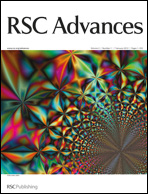Formation of well-defined spherical particles during suspension polymerization of biodegradable poly(glycolide-co-p-dioxanone) in supercritical carbon dioxide
Abstract
Biodegradable particles of poly(glycolide-co-p-dioxanone) (PGDO) were directly synthesized by suspension


 Please wait while we load your content...
Please wait while we load your content...